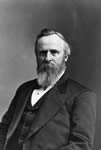 |
|
|
Hayes came into the
presidency under a deal worked out that
ended Reconstruction, and he fell short
of realizing the reforms he had envisioned
at the beginning of his term. Nevertheless,
his principles and his successful use
of the veto helped restore some of the
power of the executive branch and began
to heal the wounds inflicted on the country
by the Civil War. |
|
|
| |
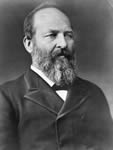 |
|
|
With Rutherford Hayes
declining to run for a second term, the
Republication chose James A. Garfield
as their candidate at the convention in
1880. Garfield defeated Winfield Hancock
in the general election. Garfield had
little time to leave his imprint on the
issues of the day before he was cut down
by an assassin's bullet. |
|
|
| |
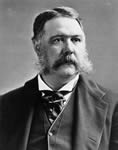 |
|
|
Chester Arthur came
to the presidency upon the assassination
of President Garfield. Himself a product
of the infamous political machine controlled
by New York boss Senator Roscoe Conkling,
Arthur surprised everyone by supporting
the 1883 Pendleton Civil Service Reform
Act. Other issues during his presidency
included the economy, and Chinese immigration. |
|
|
| |
 |
|
|
Grover Cleveland's meteoric
rise in politics took him into the White
House following the 1884 election, despite
a sex scandal during the campaign. Cleveland
believed strongly in a limited government
and he exercised his philosophy over issues
involving labor and the economy during
his first administration. His position
on the tariff contributed to his losing
reelection to Benjamin Harrison in 1888,
but he would be elected again to the presidency
in 1892. |
|
|
| |
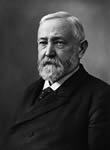 |
|
|
Benjamin Harrison was the grandson of the ninth President of the United States, William Henry Harrison. The Republican was appointed Senator from Indiana in 1881. In 1888, he was tapped by the party as a scandal-free candidate to run against Grover Cleveland. The main issues of Harrison's single presidential term were his signing of the McKinley Tariff bill into law and its impact on the economy, and an aggressive foreign policy. |
|
|
| |
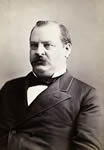 |
|
|
Grover Cleveland was elected to the presidency a second time, four years after the conclusion of his first time. The main issues & events of his second term included the economy, the Pullman Strike, race and gender issues, and a revitalization of the Monroe Doctrine in foreign policy. Cleveland's record-breaking use of the presidential veto as the "guardian president" enabled him to establish equilibrium between the executive and legislative branches. |
|
|
| |
|

|
|
|

